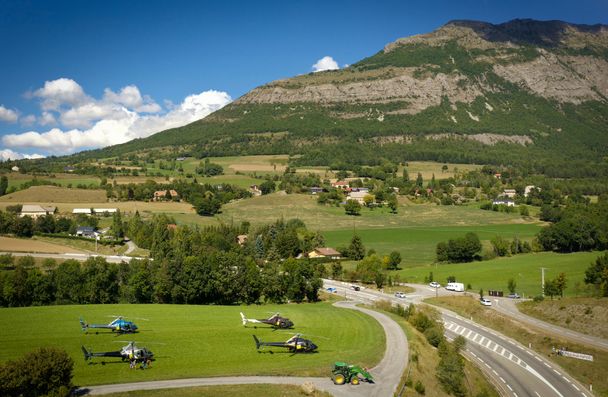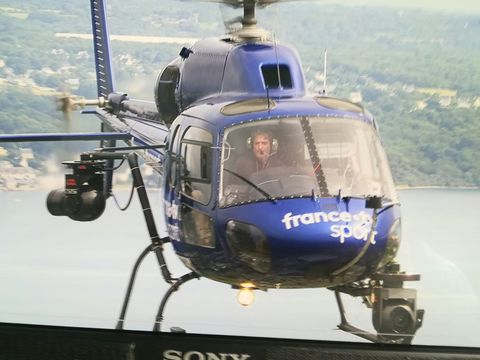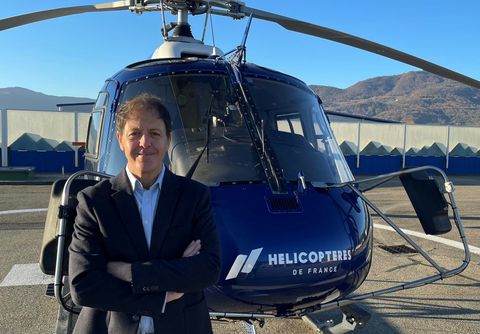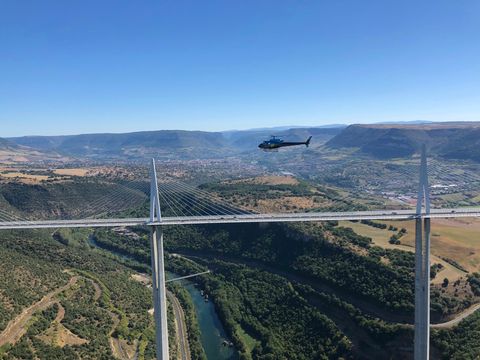The Tour de France adopts SAF for helicopter operations

Helicopters play an essential role in the live broadcasting of major sporting events. The use of SAF (sustainable aviation fuel) is a powerful lever for reducing their carbon footprint. The Tour de France and HBG group’s helicopters are a case in point.

HBG is a family-owned group with various brands, including Mont Blanc Hélicoptères and Hélicoptères de France. Each of these two companies has its own area of excellence: the former for EMS, the latter for aerial work, firefighting and support for world-class events. Examples include the Dakar Rally in winter and cycling races the rest of the year, culminating in the Tour de France in July.
“We use seven to nine helicopters for this big race,” explains Jean-Marc Genechesi, pilot, instructor and director of Hélicoptères de France. “Our helicopters are in fact used by two clients: ASO, the organiser of the Tour, and Euromedia (for France Télévisions), which provides the images that are broadcast around the world.”

H125 helicopters fit the needs for transport and filming
Needs vary from one to the other: ASO uses helicopters to move VIPs or organisers, for which single-engine H125s are sufficient. The case is different for France Télévisions, which only works with twin-engine Ecureuils for filming: “A motorisation required for all low-level flights,” explains Jean-Marc Genechesi. “The perfection and fluidity of the images provided throughout the different stages of the Tour cleverly conceal the complexity of the organisation, with, for example, strict routing requirements and the need to set up numerous temporary helipads to refuel the aircraft. Furthermore, since last year, the use of biofuel (sustainable aviation fuel, or SAF) has become a requirement.

SAF for a reduced carbon footprint
“Reducing the carbon footprint has been one of the Tour’s main concerns for several years,” says Jean-Marc Genechesi. “Just as electric cars have been introduced to the convoy, last year ASO asked us to cover a third of all stages with SAF fuel, which we did.”
This was a request easily met: the H125 is certified to fly with 50% of SAF, which is the case for all the helicopters within the Airbus range. Using 100% SAF can reduce CO2 emissions by 80% on average throughout its life cycle, with no change in consumption or power output compared with traditional fuel.
HBG is gearing up for this year's iteration of Tour de France. The group plans to have H125s for ASO’s transportation needs, and three for Euromedia (France Télévisions) for aerial filming and broadcasting. With the mandatory use of SAF, HGB has put the motions in place to make the biofuel accessible throughout the course of the race. “Last year, there was only one SAF storage and delivery point in the south of France. For the 2023 Tour, SAF will be available at several airports, which will help us achieve even more ambitious consumption objectives,” states Jean-Marc. He also adds there will also be a truck to help with the refuelling at the Annemasse airport. In total, Hélicoptères de France will use SAF for 50% of the stages for ASO and 30% for France Télévisions. A small breakthrough for a major event.

*This article was originally published in Rotor Magazine - Airbus Helicopters' customer magazine. If you would like to subscribe, please click here.